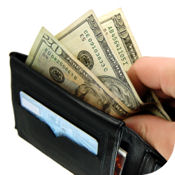 What are the symptoms?
What are the symptoms? Compulsive spending often starts out small and grows into an increasingly destructive habit. These descriptions are just a few examples of feelings or scenarios associated with compulsive spending.
Can compulsive spending be treated? Yes, compulsive spending can be treated, but it can be a difficult problem to overcome on your own. Don't be afraid to ask for help. Sometimes, simply changing your behavior and putting yourself on a budget is enough to conquer the problem. But for others, enlisting help from a friend, support group, therapist and/or financial counselor is a better approach. As with any addiction, talk to a trusted loved one and your health care provider about what's troubling you. Do not be ashamed, as compulsion spending doesn't make you a bad person. Print a copy of this assessment to make it easier for you to discuss your problems. Here are 7 tips to help you get a handle on your spending. 1. Admit you have a problem. The first step to recovery from any addiction is acknowledging that you have a problem. Having trouble controlling your spending doesn't make you weak or vulnerable; it makes you human. Talk to your health care provider to work out a treatment plan. (See #5 below for more resources.) Share your problem with a trusted loved one. They can serve as a support network and help you during your recovery. Remember that spending money is not solving any problems; it's creating new ones. Some people binge on food as a way to distract themselves from the real trouble in their lives. Others spend money as a way to numb some sort of pain or sadness. To get past that, you need to first confront those bad feelings. Continued › |






Member Comments